People often ask about the best camera to take traveling. With so many options available, from smartphones to professional DSLRs, choosing the right one can feel overwhelming. If you’re looking to step up your travel photography game and capture stunning memories beyond what your phone can offer, you’ve come to the right place. This guide will break down the essential features of a great travel camera and recommend the top contenders for 2024, focusing on why the Panasonic GX85 remains a standout choice.
Whether you’re an experienced photographer or just starting to explore the world through a lens, understanding what makes a camera ideal for travel is key. Let’s dive into the world of the Best Travel Cameras and find the perfect fit for your adventures.
Why Upgrade from Your Smartphone for Travel Photography?
Smartphones have revolutionized photography, becoming incredibly capable in recent years. So, why should you consider carrying a dedicated camera when your phone is always in your pocket? This is a crucial question, and the answer lies in the limitations of smartphone cameras when it comes to capturing truly exceptional travel photos.
While smartphone software delivers impressive results with features like HDR and panorama modes, they fall short in several key areas compared to dedicated cameras:
- Image Quality: Despite advancements, smartphone sensors are significantly smaller than those in dedicated cameras. This size difference impacts light-gathering ability, dynamic range, and overall image detail, especially in challenging lighting conditions. A larger sensor captures more light, resulting in cleaner, sharper images, particularly in low light or when you want to achieve a shallow depth of field.
- Zoom Capabilities: Smartphones often rely on digital zoom, which degrades image quality by simply cropping and enlarging the existing pixels. Dedicated cameras with optical zoom lenses offer true magnification without loss of detail, allowing you to capture distant subjects like wildlife or architectural details with clarity.
- Creative Control: While smartphone apps offer some manual controls, they are often limited and less intuitive than the dedicated dials and buttons on a camera. A dedicated camera gives you full manual control over aperture, shutter speed, and ISO, empowering you to precisely adjust settings for various shooting scenarios and achieve your desired creative effects.
- Versatility and Lenses: Smartphones have fixed lenses, limiting your perspectives. Interchangeable lens cameras, whether mirrorless or DSLR, provide unmatched versatility. You can switch lenses to suit different subjects and shooting styles, from wide-angle landscapes to telephoto wildlife shots.
Smartphone cameras excel in convenience, but dedicated cameras offer superior image quality, zoom, and creative control for serious travel photography.
Consider this panorama taken with an iPhone:
 iPhone panorama example
iPhone panorama example
Exposure: 1/900s ƒ/2.2 @ ISO 100
Focal Length: 4.15mm
Camera: iPhone SE
Date & Time: April 10, 2017, 7:17 pm
While convenient, this panorama lacks the detail and dynamic range achievable with a dedicated camera, especially in scenes with varying light. For capturing truly breathtaking travel memories, a dedicated camera remains the superior tool.
What Makes a Great Travel Camera? Essential Features to Consider
Choosing the best travel camera involves balancing several factors. Portability, versatility, and image quality are paramount when you’re on the go. Let’s explore the key features that define an excellent travel companion:
Sensor Size: The Foundation of Image Quality
Sensor size is arguably the most critical factor determining image quality. The sensor is the “film” of your digital camera, capturing light to create images. Larger sensors generally capture more light, resulting in:
- Improved Low-Light Performance: Larger sensors perform better in low-light conditions, producing cleaner images with less noise (grain).
- Wider Dynamic Range: They capture a greater range of tones, from bright highlights to deep shadows, preserving detail in challenging lighting situations.
- Shallower Depth of Field: Larger sensors allow for a shallower depth of field, creating beautiful background blur (bokeh) for portraits and isolating subjects effectively.
Tradeoff: Larger sensors often mean larger, heavier, and more expensive cameras and lenses.
The image below illustrates sensor size comparisons across different camera types:
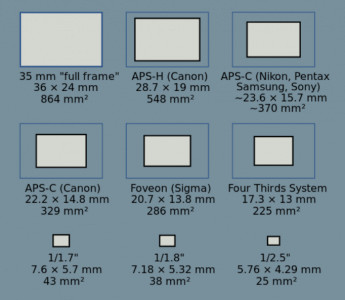 Sensor size comparison for various cameras
Sensor size comparison for various cameras
Sensor size comparison for a variety of camera types.
- Full Frame: Favored by professionals for their exceptional image quality, especially in low light and dynamic range. They are typically the largest and most expensive.
- APS-C: A popular balance of size, cost, and image quality, commonly found in consumer DSLRs and mirrorless cameras.
- Micro Four Thirds (MFT): Smaller than APS-C but still significantly larger than smartphone sensors. MFT systems prioritize compactness and lighter lenses while offering excellent image quality.
- 1-inch and smaller: Found in compact cameras and smartphones. While improving, they have inherent limitations compared to larger sensors.
Lens: The Eye of Your Camera
The lens is just as crucial as the sensor. It’s responsible for bending and focusing light onto the sensor. Lens quality significantly impacts sharpness, clarity, and overall image rendering.
Tradeoff: Lens size, weight, zoom range, and aperture (speed) are interconnected. Faster lenses (wider maximum aperture like f/1.8 or f/2.8) are typically larger and heavier, but allow more light and shallower depth of field. Longer zoom ranges often come with compromises in lens speed and size.
Traveling with bulky, professional-grade lenses can be cumbersome:
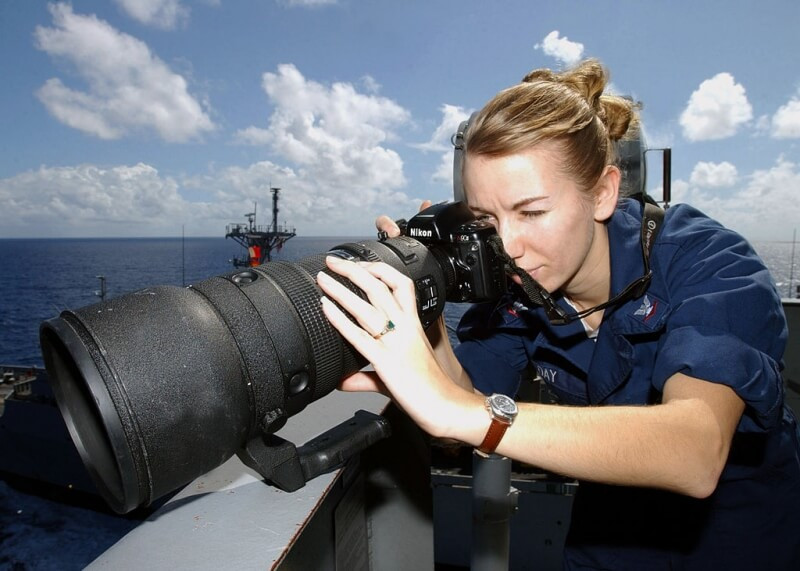 Large telephoto lens example
Large telephoto lens example
US Navy member Sabrina Day uses this giant 400mm fixed telephoto lens aboard an aircraft carrier.
For travel, balancing lens quality with size and weight is essential.
Interchangeable Lenses: Adaptability for Every Scene
Interchangeable Lens Cameras (ILCs), including mirrorless and DSLRs, offer unparalleled versatility. Swapping lenses allows you to adapt to diverse shooting situations:
- Wide-angle lenses: Capture expansive landscapes and cityscapes.
- Standard zoom lenses: Versatile for everyday shooting, portraits, and general travel photography.
- Telephoto lenses: Zoom in on distant subjects like wildlife or architectural details.
- Prime lenses (fixed focal length): Often offer superior image quality and wider apertures for low light and shallow depth of field in a more compact size.
Tradeoff: Carrying multiple lenses adds weight and bulk. Choosing the right lenses for your travel style is crucial.
ILCs empower you to choose the perfect lens for each photographic opportunity.
Image Stabilization (IS): Sharp Shots on the Move
Image stabilization compensates for camera shake, allowing you to shoot at slower shutter speeds without blur. This is invaluable for travel, where tripods are often impractical.
- Handheld Low-Light Photography: Capture sharper images in dimly lit environments without raising ISO excessively and introducing noise.
- Smoother Video Recording: IS is essential for capturing stable video footage while walking or moving.
Tradeoff: Generally, newer and more advanced cameras have better IS, often at a higher price point.
Here’s an example of a handheld skyline shot made possible by image stabilization:
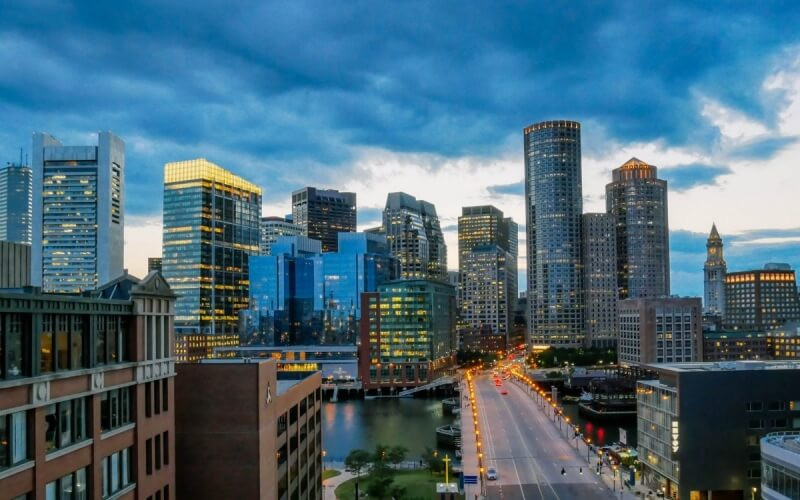 Boston skyline handheld example
Boston skyline handheld example
Size and Weight: Travel-Friendly Design
Portability is paramount for travel. A bulky, heavy camera can quickly become a burden, discouraging you from taking it out and capturing spontaneous moments.
- Easy to Carry: A compact and lightweight camera is more likely to be with you when inspiration strikes.
- Discreet Street Photography: Smaller cameras are less intimidating and attract less attention, ideal for street photography and capturing candid moments.
- Packing Convenience: A smaller camera takes up less space in your luggage, allowing you to pack more essentials.
Tradeoff: Smaller size can sometimes mean fewer features, smaller sensors, and less ergonomic controls.
Manual Settings: Unleash Your Creativity
Manual settings give you control over aperture, shutter speed, ISO, and focus. Even if you primarily shoot in automatic modes initially, learning to use manual or semi-manual modes like Aperture Priority (Av or A) and Shutter Priority (Tv or S) unlocks your creative potential.
- Control Exposure: Precisely adjust settings to achieve the desired brightness in various lighting conditions.
- Creative Effects: Manipulate aperture for depth of field control and shutter speed for motion blur or freezing action.
Tradeoff: Cameras with extensive manual controls often have a slightly larger form factor to accommodate dials and buttons. The smallest cameras may bury manual settings in menus, making them less accessible.
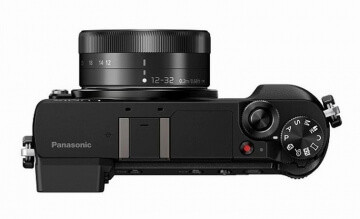 Camera with manual controls example
Camera with manual controls example
Cameras with accessible manual controls enhance the shooting experience and allow for quick adjustments.
Wireless Capability: Sharing on the Go
Wi-Fi or Bluetooth connectivity allows you to quickly transfer photos to your smartphone or tablet for sharing on social media or backing up your images.
- Instant Sharing: Share your travel moments with friends and family while still on your trip.
- Remote Control: Some cameras offer remote control via smartphone apps, useful for selfies or group shots.
- GPS Tagging: Some cameras can use your smartphone’s GPS to geotag photos, organizing your images by location.
Tradeoff: Wireless features are generally more common and advanced in newer cameras, which may come at a higher price.
Cost: Balancing Budget and Features
Cost is always a consideration. Travel cameras can range from budget-friendly to professional-level expensive. For travel, a mid-range camera often strikes the best balance between features and affordability.
Tradeoff: Spending more can get you better image quality, more advanced features, and rugged build quality, but consider your budget and the risk of loss, damage, or theft while traveling.
Bonus Features: Nice-to-Haves for Travel Photographers
Beyond the essential features, these bonus features can enhance your travel photography experience:
- Video Capabilities: Most cameras now offer video recording, with some supporting 4K resolution. Video image stabilization is crucial for smooth handheld video.
- In-Camera HDR and Panorama: These features simplify capturing high dynamic range scenes and wide panoramic views without post-processing.
- Weather Sealing: Weather-sealed cameras offer protection against dust and moisture, ideal for adventurous travel in varying conditions.
- USB Charging: In-camera USB charging allows you to conveniently charge your camera using standard USB power banks, a significant advantage when traveling.
The Best Travel Camera in 2024: Panasonic Lumix GX85/GX80
For 2024, the Panasonic Lumix GX85 (also known as GX80 in Europe) remains our top recommendation for the best travel camera. This mirrorless Micro Four Thirds camera strikes an exceptional balance of features, portability, image quality, and value.
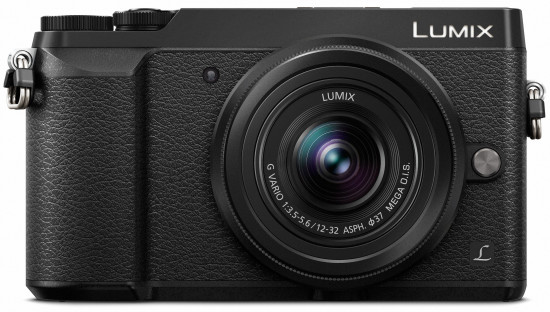 Panasonic Lumix GX85 – Best Travel Camera 2024
Panasonic Lumix GX85 – Best Travel Camera 2024
Buy the Panasonic Lumix GX85 Now
Let’s explore why the GX85 excels as a travel camera based on the features we discussed:
Ideal Sensor Size: Micro Four Thirds Advantage
The GX85 uses a Micro Four Thirds sensor. While not as large as APS-C or full-frame, it’s significantly larger than smartphone sensors and offers a sweet spot for travel:
- Excellent Image Quality: Provides impressive image quality with good low-light performance and dynamic range, surpassing smartphone capabilities.
- Compact System: The MFT system allows for smaller and lighter cameras and lenses compared to APS-C or full-frame systems, crucial for travel portability.
Compared to an iPhone sensor, the MFT sensor is approximately 13 times larger, resulting in a noticeable improvement in image quality. While APS-C sensors are slightly larger, the size and weight advantage of MFT lenses makes the GX85 system more travel-friendly overall.
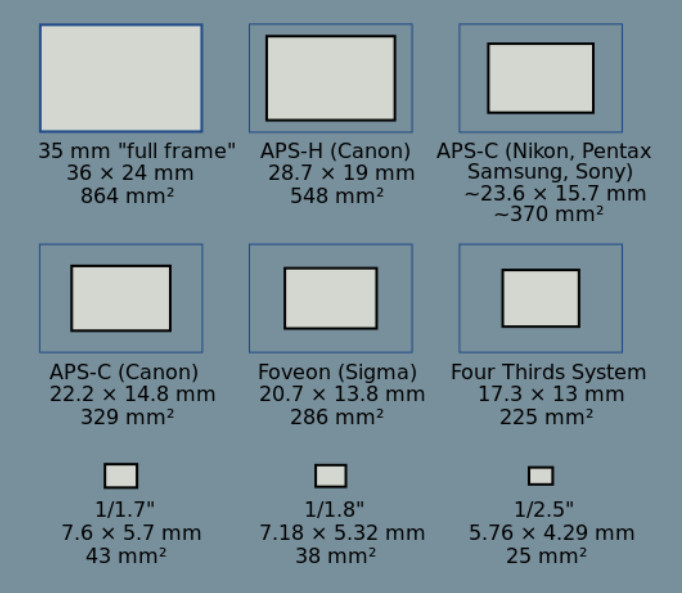 Sensor size comparison highlighting Micro Four Thirds
Sensor size comparison highlighting Micro Four Thirds
Versatile Lens Options: Interchangeable MFT System
The Micro Four Thirds system boasts a vast selection of lenses from Panasonic, Olympus, and third-party manufacturers like Sigma and Tamron. This provides incredible versatility:
- Compact Kit Lenses: The GX85 often comes bundled with compact kit lenses like a 12-32mm pancake zoom, providing a versatile starting point for travel photography.
- Wide Range of Primes and Zooms: Choose from a diverse range of lenses to suit your specific needs, from ultra-wide angles to telephoto zooms, all within a relatively compact and lightweight system.
- Dual Lens Kits: Kits including a 12-32mm and a 45-150mm lens offer excellent coverage for various travel scenarios without excessive bulk.
The interchangeable lens system allows you to tailor your setup to your travel style and photographic interests.
Portability Champion: Small and Lightweight
The Panasonic GX85 is remarkably compact and lightweight, even for a mirrorless camera. It’s smaller than many DSLRs and even some compact cameras, making it incredibly travel-friendly:
- Pocketable with Pancake Lens: With a pancake lens like the 12-32mm, the GX85 can be surprisingly pocketable, easily slipping into a jacket pocket or small bag.
- Lightweight for All-Day Carry: Its light weight ensures comfortable all-day carry, whether you’re exploring city streets or hiking trails.
- Discreet and Unobtrusive: The smaller size is less intimidating for street photography and attracts less attention in crowded tourist areas.
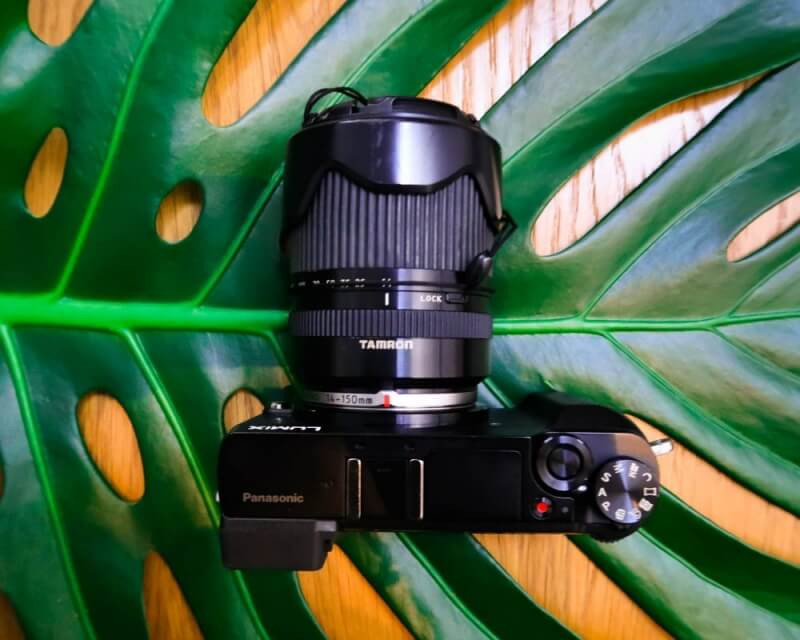 Panasonic GX85 with zoom lens – transforming into DSLR-like setup
Panasonic GX85 with zoom lens – transforming into DSLR-like setup
The GX85 truly embodies the ideal of a powerful camera that doesn’t weigh you down while traveling.
5-Axis Image Stabilization: Handheld Stability
The GX85 features impressive 5-axis in-body image stabilization (IBIS), providing up to 4 stops of stabilization. This is a game-changer for travel photography:
- Sharp Handheld Shots in Low Light: Capture clear, blur-free images in dimly lit environments without a tripod.
- Smooth Handheld Video: Record stable and professional-looking video footage while walking or moving.
- Handheld Panoramas and Long Exposures: IS expands your creative possibilities, allowing for handheld panoramas and even longer exposures in certain situations.
The GX85’s IBIS is exceptionally effective, enabling handheld shots that would be impossible with cameras lacking this feature.
Full Manual Control and User-Friendly Interface
Despite its compact size, the GX85 offers full manual controls and a user-friendly interface:
- Dedicated Dials and Buttons: Provides easy access to essential settings like aperture, shutter speed, and ISO.
- Customizable Function Buttons: Allows you to personalize the camera to your shooting style.
- Intuitive Menus: Panasonic’s menu system is well-organized and relatively easy to navigate.
- Electronic Viewfinder (EVF) and Tilting Touchscreen: Offers versatile composition options, with an EVF for bright sunlight and a tilting touchscreen for low-angle or overhead shots.
The GX85 provides the control and responsiveness needed for both beginners and experienced photographers.
Wi-Fi Connectivity for Easy Sharing
Built-in Wi-Fi allows for convenient image sharing and remote control:
- Smartphone App Integration: Panasonic’s Image App enables easy photo transfer to your smartphone or tablet.
- Remote Shooting: Control the camera remotely from your smartphone for selfies, group shots, or capturing wildlife from a distance.
- GPS Tagging via Smartphone: Use your smartphone’s GPS to geotag your photos for location-based organization.
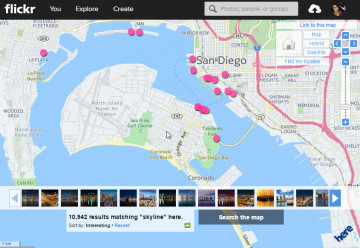 Flickr Map of San Diego – Geotagging example
Flickr Map of San Diego – Geotagging example
Affordable Price: Exceptional Value
The Panasonic GX85 is remarkably affordable for a camera with its features and performance. It offers incredible “bang for your buck,” making it an excellent choice for budget-conscious travelers.
Wired Magazine aptly called the GX85 “The Best Camera For The Money.”
For around $700 (price may vary), you can often find kits including the camera body and two lenses, representing exceptional value in the mirrorless camera market.
Drawbacks to Consider
While the GX85 is outstanding, there are a few minor drawbacks:
- Battery Life: Battery life is decent but not exceptional. Carrying spare batteries is recommended, especially for extended shooting days.
- Touchscreen Sensitivity: The touchscreen can be overly sensitive, and accidental touches can sometimes change settings. Disabling some touch features might be preferred by some users.
- Feature Complexity: The GX85 has numerous features, which can be slightly overwhelming initially. Some features are mutually exclusive, requiring some learning to understand their interactions.
Best Compact Travel Camera Alternative: Canon G7x Mark III
If you prefer a truly pocketable, fixed-lens compact camera, the Canon G7x Mark III is our top recommendation.
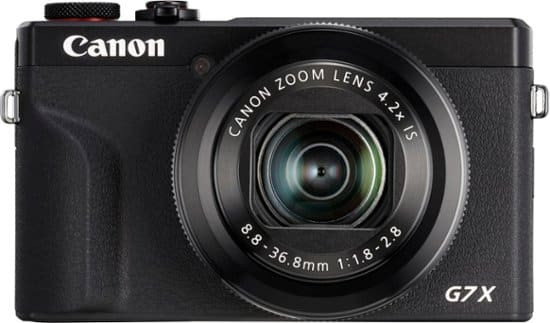 Canon G7x Mark III – Best Compact Travel Camera 2024
Canon G7x Mark III – Best Compact Travel Camera 2024
Buy the Canon G7x Mark III now
The G7x Mark III offers:
- 1-inch Sensor: Larger sensor than most compact cameras, delivering excellent image quality for its size.
- Fast f/1.8-f/2.8 Lens: Bright lens with a 24-100mm equivalent zoom range, great for low light and shallow depth of field.
- Pocketable Size: Truly compact and easily fits in a pocket, making it incredibly convenient for travel.
- Tilting Screen: 180-degree tilting screen for selfies and vlogging.
- In-Camera USB Charging: Convenient USB charging, similar to the GX85.
Wired Magazine hailed the Canon G7x Mark II (predecessor) as “likely to be the best pocket camera Canon has ever produced.”
The G7x Mark III is an excellent choice if portability is your absolute top priority and you don’t need interchangeable lenses.
Conclusion: Choose the Best Travel Camera for Your Adventure
Selecting the best travel camera depends on your individual needs and priorities. However, for most travelers seeking a balance of image quality, versatility, portability, and value, the Panasonic Lumix GX85/GX80 stands out as the top choice in 2024. Its Micro Four Thirds system offers a compelling combination of compact size and excellent performance.
If ultimate portability is paramount and interchangeable lenses are not a necessity, the Canon G7x Mark III is a fantastic compact alternative.
No matter which camera you choose, investing in a dedicated travel camera will elevate your travel photography and allow you to capture memories with a level of quality and creative control that smartphones simply can’t match. Happy travels and happy shooting!
This post has affiliate links. As an Amazon Associate I earn from qualifying purchases. The opinions presented are my own.
Essential Accessories for the GX85
